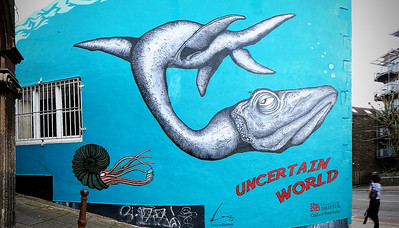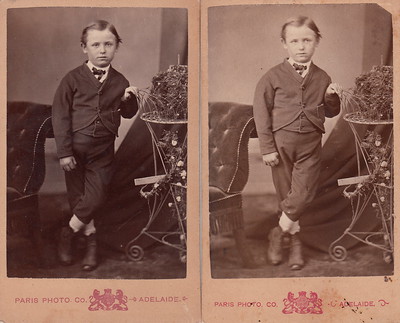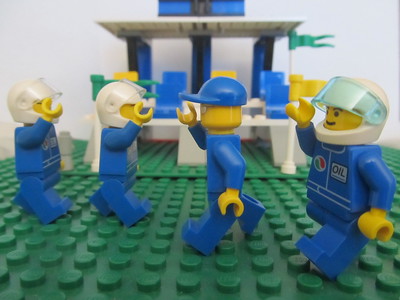Do you build trust or break it?
When someone tells you their truth, what do you do? Do you ask them to defend? Do you tell them what you think? Do you dismiss them? Do you listen? Do you believe them?
When someone has the courage to tell you their truth, they demonstrate they trust you. If you want to destroy their trust, ask them to defend their truth. Sooner or later, or then and there, they’ll stop trusting you. And like falling off a cliff, it’s almost impossible for things to be the same.
When someone confesses their truth, they demonstrate they trust you enough to share a difficult issue with you. If you want them to feel small and block them from sharing their truth in the future, tell them why their truth isn’t right. That will be the last time they speak candidly with you. Ever.
When someone reluctantly shares their truth, they demonstrate they’re willing to push through their discomfort due to the significance and their trust in you. If you want them to get angry, explain how they see things incorrectly or tell them what they don’t understand. Either one will cause them to move to a purely transactional relationship with you. And there’s no coming back from that.
When someone confides in you and shares their truth, you ask them to defend it, and, despite your unskillful response they share it again, believe them. And if you don’t, you’ll damn yourself twice.
When someone shares their truth and you listen without judging, you build trust.
When someone sends you a heartfelt email describing a dilemma and your response is to set up a meeting to gain a fuller understanding, you build trust.
When someone demonstrates the courage to share a truth that they know contradicts the mission, believe them. You’ll build trust.
When someone shares their truth, you have an opportunity to build trust or break it. Which will you choose?
Image credit — Christian Scheja
The Power of Praise
 Praise happens when you tell someone they did something wonderful. Praise is virtually free and almost the most powerful force in the universe.
Praise happens when you tell someone they did something wonderful. Praise is virtually free and almost the most powerful force in the universe.
When you tell someone what they did was amazing, they stand three inches taller. Right in front of you, they get taller. They grow. They expand. Don’t believe me? Try it. And bring a ruler.
To deliver praise, you must pay attention. You must invest in what’s going on, you must hear what is said, and watch what is done. Congratulations. Though you have yet to deliver praise, you’ve already differentiated yourself. Next, you must compare the behavior against the norms and recognize a difference. Sure, it’s a simple difference calculation, but it’s a calculation that takes attention and caring, which in today’s rat race are in short supply. Now, you must find words the right words to describe the specialness of the behavior-why it’s different and why it matters. Then, you’ve got to deliver it in a way that is worthy of the specialness.
Deliver praise in public and be specific. This person (use their name) did (say what they did) and it’s important because (and say why it is important). And tell people what you think and feel. They (use their name) did (say what they did) and I feel (e.g., happy, excited, proud) because (tell them why you feel as you do). Feel free to steal that script, but if you do, stick to it because it’s a good one.
A rule: If you don’t praise people, you don’t know what you’re doing.
But here’s the thing about praise. If you fake it, you bring about its opposite. When you fake it, people get smaller and they get angry. They get smaller because they know they are being patronized. And they get angry for the same reason. So, a word of caution. If you deliver paise that’s fake, you will lose all credibility with the recipient and anyone in earshot. And it’s such a violation of their dignity, I don’t know a way to resurrect their trust. In short, if you fake it, it’s over for you.
Another rule: If you have the urge to deliver fake praise, don’t.
Praise is powerful, but in today’s environment is almost extinct. It’s not that praise-worthy behavior is uncommon, rather, the time and attention required to recognize and formally acknowledge praise-worthy behavior is uncommon.
If you want to elevate the performance of a team, praise their behavior. And do it in public. Pay attention and praise. Schedule a meeting, buy the pizza, and praise. Be specific, be genuine, and praise.
Yes, you will spend a lot of money on pizza, and, yes, that is the best return on investment in the universe.
“Alex and his lion friend” by Tambako the Jaguar is marked with CC BY-ND 2.0.
Tell the truth, especially when it’s difficult.
 Our behavior is a result of causes and conditions. One thing paves the way for the next. Elements of the first thing create a preferential path for the next thing. If someone gets praised for doing A, more people will do A, even when A is the wrong behavior. If someone gets chastised for doing B, B won’t happen again, even when B is the right behavior.
Our behavior is a result of causes and conditions. One thing paves the way for the next. Elements of the first thing create a preferential path for the next thing. If someone gets praised for doing A, more people will do A, even when A is the wrong behavior. If someone gets chastised for doing B, B won’t happen again, even when B is the right behavior.
The most troubling set of causes and conditions are those that block people from telling their truth. When everyone knows it’s a bad idea, but no one is willing to say it out loud, that’s a big problem. In fact, it may be the biggest problem.
When people think they won’t be taken seriously, they keep their truth to themselves. When people know they will be dismissed, they keep quiet. When people feel the situation is hopeless because there’s no way they’ll be listened to, they say nothing.
When people see others not taken seriously, that creates conditions for future truths to be withheld. When people see others being dismissed, that creates conditions for future truths to be kept quiet. When people see others in others from not being listened to, that creates conditions for future truths to remain unsaid.
And causes and conditions are self-strengthening. The more causes and conditions are reinforced, the more the behaviors become ingrained. The more people are stifled, the more they will keep quiet. The more people are dismissed, the more they’ll shut up. The more people’s truths are ignored, the more they’ll remain unsaid.
Here are three rules for truth-telling that will help you and your company move forward:
- Without truth-telling, there can be no truth-telling.
- The longer truth-telling is stifled, the harder it is for truth-telling to reemerge.
- Truth-telling begets truth-telling.
Image credit — Jinterwas
Instead of rebranding, why not keep the brand and improve your offering?
 Cigarette companies rebranded themselves because their products caused cancer and they wanted to separate themselves from how their customers experienced their products. Their name and logo (which stand for their brand) were mapped to bad things (cancer) so they changed their name and logo. The bad things still happened, but the company was one step removed. There was always the option to stop causing cancer and to leave the name and logo as-is, but that would have required a real change, difficult change, a fundamental change. Instead of stopping the harm, cigarette companies ran away from their heritage and rebranded.
Cigarette companies rebranded themselves because their products caused cancer and they wanted to separate themselves from how their customers experienced their products. Their name and logo (which stand for their brand) were mapped to bad things (cancer) so they changed their name and logo. The bad things still happened, but the company was one step removed. There was always the option to stop causing cancer and to leave the name and logo as-is, but that would have required a real change, difficult change, a fundamental change. Instead of stopping the harm, cigarette companies ran away from their heritage and rebranded.
Facebook rebranded itself because its offering caused cancer of a different sort. And they, too, wanted to separate themselves from how their customers experienced their offering. The world mapped the Facebook brand to bullying, harming children, and misinformation that destroyed institutions. Sure, Facebook had the option to keep the name and logo and stop doing harm, but they chose to keep the harm and change the name and logo. Like the cigarette companies, they chose to keep the unskillful behavior and change their brand to try to sidestep their damaging ways. Yes, they could have changed their behavior and kept their logo, but they chose to change their logo and double down on their unhealthy heritage.
The cigarette companies and Facebook didn’t rebrand themselves to move toward something better, they rebranded to run away from the very thing they created, the very experience they delivered to their customers. In that way, they tried to distance themselves from their offering because their offering was harmful. And in that way, rebranding is most often about moving away from the experience that customers experience. And in that way, rebranding is hardly ever about moving toward something better.
One exception I can think of is a special type of rebranding that is a distillation of the brand, where the brand name gets shorter. Several made-up examples: Nike Shoes to Nike; MacDonalds Hamburgers to MacDonalds; and Netflix Streaming Services to Netflix. In all three cases, the offering hasn’t changed and customers still recognize the brand. Everyone still knows it’s all about cool footwear, a repeatable fast-food experience, and top-notch entertainment content. If anything, the connection with the heritage is concentrated and strengthened and the appeal is broader. If your rebranding makes the name longer or the message more nuanced, you get some credit for confusing your customers, but you don’t qualify for this special exception.
If you want to move toward something better, it’s likely better to keep the name and logo and change the offering to something better. Your brand has history and your customers have mapped the goodness you provide to your name and logo. Why not use that to your advantage? Why not build on what you’ve built and morph it slowly into something better? Why not keep the brand and improve the offering? Why not remap your good brand to an improved offering so that your brand improves slowly over time? Isn’t it more effective to use your brand recognition as the mechanism to attract attention to your improved offering?
In almost all cases, rebranding is a sign that something’s wrong. It’s expensive, it consumes a huge amount of company resources, and there’s little to no direct benefit to customers. When you feel the urge to rebrand, I strongly urge you to keep the brand and improve your offering. That way your customers will benefit and your brand will improve.
Image credit Quinn Dombrowski
An open letter to company leaders: We’re still out of gas.
We’re still out of gas.
Corporate initiatives and reinvention are important, but so are the fundamentals of meeting customer orders and keeping the production lines running. And so is our emotional well-being.
We cannot do it all.
Our youngest children must go to daycare and elementary school, and that scares us. And when they get the sniffles, we have a difficult time knowing whether it’s the sniffles or Covid. And that creates stress for us. Though we faithfully show up every day, our children’s health is a concern for us. We still give 100%, but it isn’t as good as a couple of years ago. But it is our best.
Our children in high school and college are having a difficult time. In-person, not in-person, masks, no mask, and soon-to-be masks are all additional stressors to the already stressful high school and college dynamics. This is what we live with every day. Is college even worth it? Our kids aren’t sure and neither are we. But that doesn’t stop the expenses. This is what we have to deal with after a full day of work. It’s stressful and draining. And our batteries aren’t fully charged when we wake up in the morning. Yet, we come to work and give our best. Though we know our best isn’t as good as it used to be, it IS our best.
We can’t give more.
And there’s a war in Europe. And while that messes up the company’s financials, it also messes up our emotional state. People are being killed every day and we see the pictures on the web. This drains and debilitates us. We need some time to process all this.
Partisan politics are sucking the positivity out of our country, and it drains all of us.
We have less to give.
And climate change is here, and it’s scary. And we don’t know what to do. We didn’t travel for business over the last years, and we did okay. Why not save the cost and the carbon like we did over the last two years?
Respectfully submitted,
Your People
image credit — Nathan
Did you make a difference today?
Did you engage today with someone that needed your time and attention, though they didn’t ask? You had a choice to float above it all or recognize that your time and attention were needed. And then you had a follow-on choice: to keep on truckin’ or engage. If you recognized they needed your help, what caused you to spend the energy needed to do that? And if you took the further step to engage, why did you do that? For both questions, I bet the answer is the same – because you care about them and you care about the work. And I bet they know that and I bet you made a difference.
Did you alter your schedule today because something important came up? What caused you to do that? Was it about the thing that came up or the person(s) impacted by the thing that came up? I bet it was the latter. And I bet you made a difference.
Did you spend a lot of energy at work today? If so, why did you do that? Was it because you care about the people you work with? Was it because you care about your customers? Was it because you care enough about yourself to live up to your best expectations? I bet it was all those reasons. And I bet you made a difference.
Image credit — Dr. Matthias Ripp
Work Like You Matter
 When you were wrong, the outcome was different than you thought.
When you were wrong, the outcome was different than you thought.
When the outcome was different than you thought, there was uncertainty as the work was new.
When there was uncertainty, you knew there would be learning.
When you were afraid of learning, you were afraid to be wrong.
And when you were afraid to be wrong, you were really afraid about what people would think of you.
Would you rather wall off uncertainty to prevent yourself from being wrong or would you rather try something new?
If there’s a difference between what others think of you and what you think of yourself, whose opinion matters more?
Why does it matter what people think of you?
Why do you let their mattering block you from trying new things?
In the end, hold onto the fact that you matter, especially when you have the courage to be wrong.
“Oh no, what went wrong?” by Bennilover is marked with CC BY-ND 2.0.
When You Don’t Know What To Do…
 When you don’t know what to do, what do you do? This is a difficult question.
When you don’t know what to do, what do you do? This is a difficult question.
Here are some thoughts that may help you figure out what to do when you really don’t know.
Don’t confuse activity with progress.
Gather your two best friends, go off-site, and define the system as it is.
Don’t ask everyone what they think because the Collective’s thoughts will be diffuse, bland, and tired.
Get outside.
Draw a picture of how things work today.
Get a good meal.
Make a graph of goodness over time. If it’s still increasing, do more of what you did last time. If it’s flat, do something else.
Get some exercise.
Don’t judge yourself negatively. This is difficult work.
Get some sleep.
Help someone with their problem. The distraction will keep you out of the way as your mind works on it for you.
Spend time with friends.
Try a new idea at the smallest scale. It will likely lead to a better one. Repeat.
Use your best judgment.
Image credit – Andrew Gustar
Same-But-Different, A Superpower That Can Save The Day
 If there’s one superpower to develop, it’s to learn how to assess a project and get a good feel for when it will launch.
If there’s one superpower to develop, it’s to learn how to assess a project and get a good feel for when it will launch.
When you want to know how long a project will take, ask this simple question: ‘What must the project team learn before the project can launch?” By starting with this single question, you will start the discussion that will lead you to an understanding of what hasn’t been done before and where the uncertainty is hiding. And if there’s one thing that can accelerate a project, it’s defining where the uncertainty is hiding. And knowing this doubly powerful, like a pure two-for-one, because if you know where uncertainty is, by definition, you know where it isn’t. Where the uncertainty isn’t, you can do what you did last time, and because you’ve done it before, you know how long it will take. No new tools, no new methods, no new analyses, no new machines, no new skillsets, no new anything. And for the remaining elements of the project, well, that’s where the uncertainty is hiding and that’s where you will focus on the learning needed to secure the launch.
But it can be difficult to understand the specific learning that must be done for a project to launch. One trick I like to use is the Same-But-Different method. It goes like this. Identify a project that launched (Project A) that’s most similar to the one that will launch next (Project B) and perform a subtraction of sorts. Declare that Project B (the one you want to launch) is the same as Project A (the one you already launched) but different in specific ways and then define those differences as clearly and tightly as possible. And where it’s different, that’s where the learning energy must be concentrated.
Same-But-Different sounds simplistic and trivial, but it isn’t. More than anything, it’s powerful. For the elements that are the same, you do what you did last time, which is freeing. And for the small subset if things that are different, you dig in!
Same-But-Different drives deep clarity and extreme focus, which result in blistering progress and blinding effectiveness.
And for some reason unknown to me, asking a team to define the novel elements of a project is at least fifty times more difficult than asking them how Project B is different than Project A. So, it feels good to the team when they can use Same-But-Different to quickly easily define what’s different and then point directly to the uncertainty. And once the team knows where the uncertainty is hiding, it’s no longer hiding.
And if there’s one thing a project team likes, it’s knowing where the uncertainty is hiding.
“The same, but different by the Paris Photographic Co. (c.1880)” by pellethepoet is marked with CC BY 2.0.
Small Teams are Mighty
 When you want new thinking or rapid progress, create a small team.
When you want new thinking or rapid progress, create a small team.
When you have a small team, they manage the handoffs on their own and help each other.
Small teams hold themselves accountable.
With small teams, one member’s problem becomes everyone’s problem in record time.
Small teams can’t work on more than one project at a time because it’s a small team.
And when a small team works on a single project, progress is rapid.
Small teams use their judgment because they have to.
The judgment of small teams is good because they use it often.
On small teams, team members are loyal to each other and set clear expectations.
Small teams coordinate and phase the work as needed.
With small teams, waiting is reduced because the team members see it immediately.
When something breaks, small teams fix it quickly because the breakage is apparent to all.
The tight connections of a small team are magic.
Small teams are fun.
Small teams are effective.
And small teams are powered by trust.
“LEGO Octan pit crew celebrating High Five Day (held every third Thursday of April)” by Pest15 is marked with CC BY-SA 2.0.
Things I Sometimes Forget
 Clean-sheet designs are fun, right up until they don’t launch.
Clean-sheet designs are fun, right up until they don’t launch.
When you feel the urge to do a clean-sheet design, go home early.
When you don’t know how to make it better, make it worse and do the opposite.
Without trying, there is no way to know if it will work.
Trying sometimes feels like dying.
But without trying, nothing changes.
Agreement is important, but only after the critical decision has been made.
When there’s 100% agreement, you waited too long to make the decision.
When it’s unclear who the customer is, ask “Whose problem will be solved?”
When the value proposition is unclear, ask ‘What problem will be solved?”
When your technology becomes mature, no one wants to believe it.
When everyone believes the technology is mature, you should have started working on the new technology four years ago.
If your projects are slow, blame your decision-making processes.
Two of the most important decisions: which projects to start and which to stop.
All the action happens at the interfaces, but that’s also where two spans of control come together and chafe.
If you want to understand your silos and why they don’t play nicely together, look at the organizational chart.
When a company starts up, the product sets the organizational structure.
Then, once a company is mature, the organizational structure constrains the product.
At the early stages of a project, there’s a lot of uncertainty.
And once the project is complete, there’s a lot of uncertainty.
“Toys Never Forget” by Alyssa L. Miller is marked with CC BY 2.0.



 Mike Shipulski
Mike Shipulski